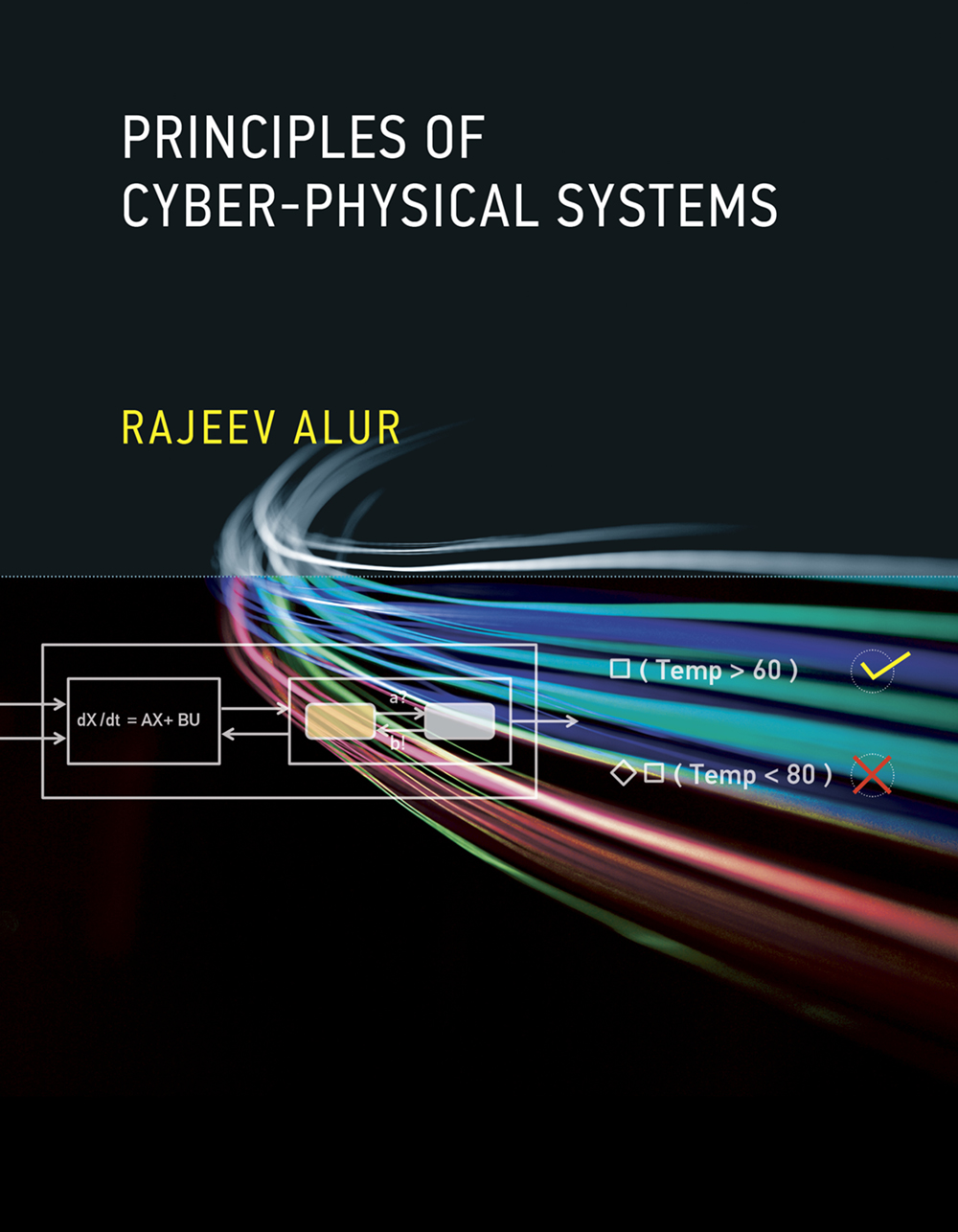
|
Principles of Cyber-Physical Systems
MIT Press, 2015
|
Overview
A cyber-physical system consists of a collection of computing devices communicating with one another and interacting with the physical world
via sensors and actuators in a feedback loop. Increasingly, such systems are everywhere, from smart buildings to medical devices
to automobiles. This textbook offers a rigorous and comprehensive introduction to the principles of
design, specification, modeling, and analysis of cyber-physical systems. The book draws
on a diverse set of subdisciplines, including model-based design, concurrency theory, distributed algorithms,
formal methods for specification and verification, control theory, real-time systems, and hybrid systems,
explaining core ideas from each that are relevant to system design and analysis.
The book explains how formal models provide mathematical abstractions to manage the complexity of
a system design. It covers both synchronous and asynchronous models for concurrent computation,
continuous-time models for dynamical systems, and hybrid systems for integrating discrete
and continuous evolution. The role of correctness requirements in the design of reliable
systems is illustrated with a range of specification formalisms and the associated techniques
for formal verification. The topics include safety and liveness requirements, temporal logic, model checking,
deductive verification, stability analysis of linear systems, and real-time scheduling algorithms.
Principles of modeling, specification, and analysis are illustrated by constructing solutions to
representative design problems from distributed algorithms, network protocols, control design, and robotics.
Course Organization
This textbook is suitable for a semester-long course aimed at upper-level undergraduate or first-year graduate
students in computer science, computer engineering, or electrical engineering.
Such a course for students in the Embedded Systems Masters program at University of Pennsylvania
has been offered for the past many years using drafts of this textbook.
By a suitable selection of topics, it is possible to use this textbook for
a course focused only on modeling, design, and case studies and also
for a course focused on formal modeling and verification of (discrete) reactive systems.
Available teaching resources incldue an extensive set of exercises of varying difficulty levels,
solutions manual, powerpoint slides, and project suggestions.
Resources
Instructions on how to obtain solutions, slides, and projects are on the MIT Press website.
Endorsements
Cyber-physical systems are ubiquitous in modern technology. They occur in planes, automobiles, and other
aspects of our daily life. It is critically important that they be correct, since people's lives may depend on them.
This book is an excellent introduction to a complex and highly technical subject by the leading researcher
in that field. I enthusiastically recommend it for either individual study or classroom use.
--- Edmund M. Clarke, CMU.
This is the first self-contained and comprehensive textbook presenting an elegant and rigorous
unification of the theoretical underpinnings behind the practices in the emerging field
of cyber-physical systems. It is remarkably well written and documented. It is a unique guide
to understanding the multifaceted aspects of cyber-physical systems and their numerous applications.
--- Joseph Sifakis, EPFL.
For any questions and/or corrections, email
Rajeev Alur.

